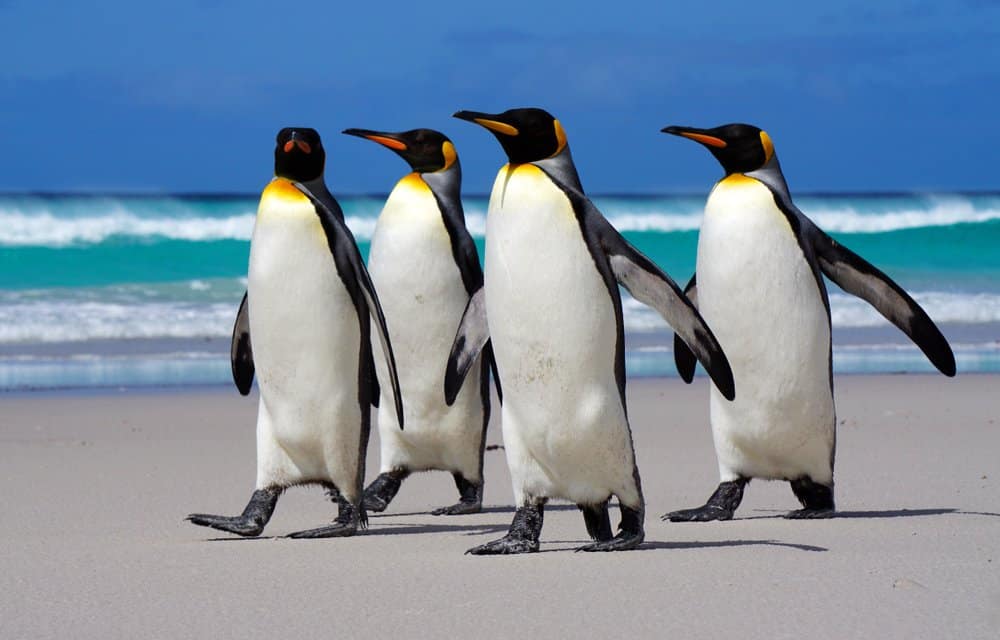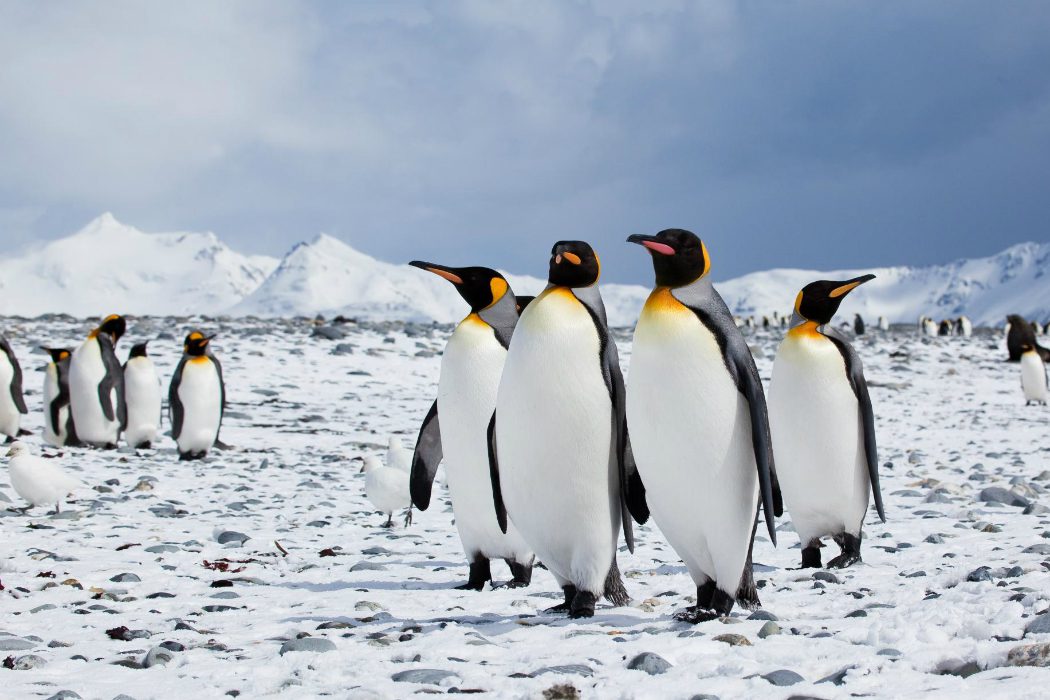Penguins are among the most fascinating creatures on Earth, captivating people worldwide with their unique appearance and social behaviors. These flightless birds, native to the Southern Hemisphere, have become symbols of resilience and adaptability in harsh environments. From their distinctive waddling walk to their incredible swimming abilities, penguins never fail to intrigue scientists and animal enthusiasts alike. In this comprehensive guide, we'll delve into the world of penguins, exploring their biology, behavior, and the challenges they face in the modern world.
Penguins have long been admired for their striking black-and-white plumage and their ability to thrive in some of the planet's most extreme climates. While many associate penguins exclusively with Antarctica, these birds can actually be found across various regions of the Southern Hemisphere, including South America, Africa, and Australia. Understanding their habitats, diet, and social structures is crucial to appreciating their role in the ecosystem.
As climate change and human activities increasingly impact their natural environments, it's more important than ever to learn about penguins and how we can help protect them. By exploring their biology, behavior, and the threats they face, we can gain a deeper understanding of these remarkable creatures and their significance in the global ecosystem. Let's dive into the world of penguins and discover what makes them so special.
Read also:Katherine Cannon Net Worth A Comprehensive Look Into Her Financial Empire
Table of Contents
- The Biology of Penguins
- Penguin Habitats
- What Do Penguins Eat?
- Penguin Behavior and Social Structures
- The Different Species of Penguins
- Threats to Penguins
- Conservation Efforts for Penguins
- Interesting Facts About Penguins
- Common Myths About Penguins
- The Future of Penguins
The Biology of Penguins
Penguins are flightless birds that belong to the scientific order Sphenisciformes and the family Spheniscidae. Their bodies are perfectly adapted for life in water, with streamlined shapes that allow them to swim efficiently. Penguins have dense feathers that provide insulation against cold water and wind, as well as a layer of blubber that helps them stay warm in icy environments.
Physical Characteristics
One of the most distinctive features of penguins is their black-and-white plumage, which serves as camouflage in the water. The black coloration on their backs helps them blend into the depths when viewed from above, while their white bellies make them less visible from below. Penguins also have strong flippers that function like wings, enabling them to "fly" through water at impressive speeds.
Some key physical characteristics of penguins include:
- Compact, streamlined bodies for efficient swimming
- Webbed feet for better maneuverability in water
- Strong beaks adapted for catching fish and other prey
Penguin Habitats
Although penguins are often associated with Antarctica, they inhabit a wide range of environments across the Southern Hemisphere. These birds can be found in diverse locations, from icy Antarctic regions to temperate climates in South America, Africa, and Australia. Each species of penguin has adapted to its specific environment, allowing them to thrive in various conditions.
Antarctic Penguins
Penguins living in Antarctica, such as Emperor and Adélie penguins, have developed unique adaptations to survive in one of the coldest places on Earth. These adaptations include thick layers of blubber, dense feather coverage, and huddling behaviors that help them conserve heat during harsh winters.
What Do Penguins Eat?
Penguins are carnivorous animals whose diets primarily consist of fish, squid, and krill. Their feeding habits vary depending on the species and their geographic location. Penguins are skilled hunters, using their excellent swimming abilities to catch prey underwater. They can dive to great depths and hold their breath for extended periods, allowing them to pursue fast-moving fish and squid.
Read also:Tom Selleck 2025 The Iconic Journey Of A Hollywood Legend
Key Prey Items
The diet of penguins typically includes:
- Fish such as anchovies and sardines
- Krill, a small shrimp-like crustacean
- Squid and other cephalopods
Penguin Behavior and Social Structures
Penguins are highly social animals that live in large colonies, often referred to as rookeries. These colonies can consist of thousands of individuals, and social interactions play a crucial role in their lives. Penguins communicate with one another through a variety of vocalizations and body movements, which help them identify mates, care for their young, and defend their territory.
Mating and Reproduction
Penguins form strong pair bonds during the breeding season, with many species practicing long-term monogamy. Courtship rituals involve elaborate displays of behavior, such as bowing, calling, and presenting stones to potential mates. Once a pair has formed, they work together to build nests, incubate eggs, and care for their chicks.
The Different Species of Penguins
There are 18 recognized species of penguins, each with its own unique characteristics and adaptations. Some of the most well-known species include Emperor penguins, King penguins, Gentoo penguins, and African penguins. Each species has evolved to thrive in its specific habitat, from the icy landscapes of Antarctica to the warmer climates of southern Africa.
Comparison of Species
Here's a brief overview of some penguin species:
- Emperor Penguins: The largest penguin species, found exclusively in Antarctica.
- King Penguins: Second-largest species, known for their vibrant orange markings.
- Gentoo Penguins: Known for their speed and agility in the water.
- African Penguins: A species found along the southern coast of Africa, often called "jackass penguins" due to their braying calls.
Threats to Penguins
Penguins face numerous threats in the modern world, many of which are caused by human activities. Climate change, overfishing, pollution, and habitat destruction are among the most significant challenges these birds encounter. As ocean temperatures rise and prey populations decline, penguins must travel further to find food, putting additional stress on their already demanding lives.
Impact of Climate Change
Climate change is one of the biggest threats to penguins, particularly those living in Antarctica. Melting sea ice reduces the availability of krill, a key food source for many penguin species. Additionally, rising sea levels and changing weather patterns can disrupt nesting sites and breeding cycles.
Conservation Efforts for Penguins
Efforts to protect penguins involve a combination of international agreements, local conservation programs, and public awareness campaigns. Protected areas, such as marine reserves and national parks, have been established to safeguard penguin habitats and ensure the survival of these remarkable birds. Organizations like the International Union for Conservation of Nature (IUCN) play a critical role in monitoring penguin populations and implementing conservation strategies.
Community Involvement
Local communities can also contribute to penguin conservation by supporting sustainable fishing practices, reducing plastic waste, and participating in beach clean-up initiatives. Educating the public about the importance of protecting penguins and their habitats is essential for long-term success in conservation efforts.
Interesting Facts About Penguins
Penguins are full of surprises, and there's always something new to learn about these incredible birds. Here are some fascinating facts about penguins:
- Penguins can swim up to 22 miles per hour, making them one of the fastest swimming birds.
- Emperor penguins can dive to depths of over 1,800 feet and hold their breath for up to 20 minutes.
- Penguins have a special gland above their eyes that removes excess salt from their bodies, allowing them to drink seawater.
Common Myths About Penguins
There are several misconceptions about penguins that have persisted over the years. One common myth is that all penguins live in Antarctica, when in fact many species inhabit warmer regions. Another misconception is that penguins are clumsy on land, when in reality they are surprisingly agile and can move quickly when needed.
Debunking Myths
Here are some myths about penguins and the truth behind them:
- Myth: Penguins are always cold. Truth: Penguins regulate their body temperature through various adaptations, including blubber and huddling behaviors.
- Myth: Penguins only eat fish. Truth: While fish make up a significant portion of their diet, penguins also consume squid and krill.
The Future of Penguins
The future of penguins depends on our ability to address the challenges they face, particularly climate change and habitat destruction. By implementing effective conservation strategies and promoting sustainable practices, we can help ensure that these remarkable birds continue to thrive in the wild. Public awareness and education will play a crucial role in this effort, as individuals and communities come together to protect penguins and their habitats.
What You Can Do
There are several ways you can contribute to penguin conservation:
- Reduce your carbon footprint by using renewable energy sources and limiting waste.
- Support organizations working to protect penguins and their habitats.
- Spread awareness about the importance of conserving penguins and the ecosystems they inhabit.
Kesimpulan
Penguins are extraordinary creatures that have adapted to some of the most challenging environments on Earth. From their unique biology and social behaviors to the threats they face in the modern world, understanding penguins is essential for appreciating their role in the global ecosystem. By learning about these remarkable birds and supporting conservation efforts, we can help ensure their survival for future generations.
We encourage you to take action by sharing this article, spreading awareness about penguin conservation, and exploring other resources to deepen your knowledge of these incredible animals. Together, we can make a difference in protecting penguins and the habitats they depend on.


